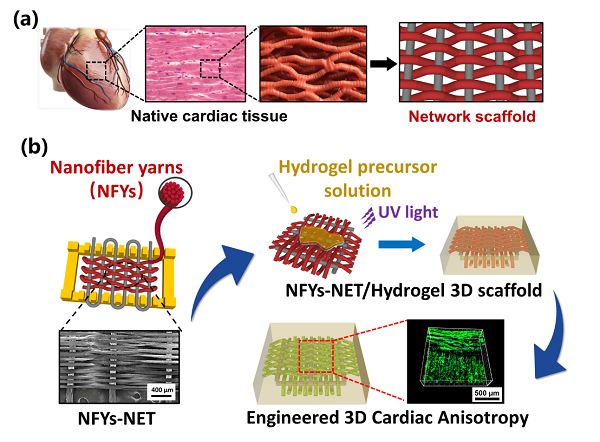XJTU researchers improve 3D scaffold for cardiac tissue engineering

Recently, XJTU Professor Guo Baolin and his colleagues from the Center for Biomedical Engineering and Regenerative Medicine of the Frontier Institute of Science and Technology have worked out a composite 3D scaffold for cardiac tissue engineering by combining conductive nanofiber yarns with photo-cured hydrogel. Aligned conductive nanofiber yarnsare prepared through dry-wet electrospinning technology and interwoven into a staggered network structure similar to natural cardiac tissue. Meanwhile, the multilayer nanofiber yarns network iswrapped up within a hydrogelshell, forming a three-dimensional composite scaffold.
The study shows the nanofiber yarns network-hydrogel composite scaffolds can promote 3D-oriented growth and maturation of cardiomyocytes. Also, each layer of the nanofiber yarns network can independently control the growth and arrangement of cardiomyocytes of the corresponding layer. The hydrogel shell not only provides a suitable three-dimensional environment for the growth and nutrient transport of cardiomyocytes, but also helps to construct endothelialized myocardium via the co-culture of cardiomyocytes and endothelial cells.The composite scaffolds fully simulate the 3D anisotropic structure of natural cardiac tissue, showing goodpotential for applications in cardiac tissue repair and regeneration.
The above results has been published in ACS Nano (impact factor 13.942) in the article entitled Interwoven Aligned Conductive Nanofiber Yarn/Hydrogel Composite Scaffolds for Engineered 3D Cardiac Anisotropy, with XJTU PhD candidates Wu Yaobin and Wang Ling as the co-first authors.
Linkto the article: http://pubs.acs.org/doi/abs/10.1021/acsnano.7b01062

